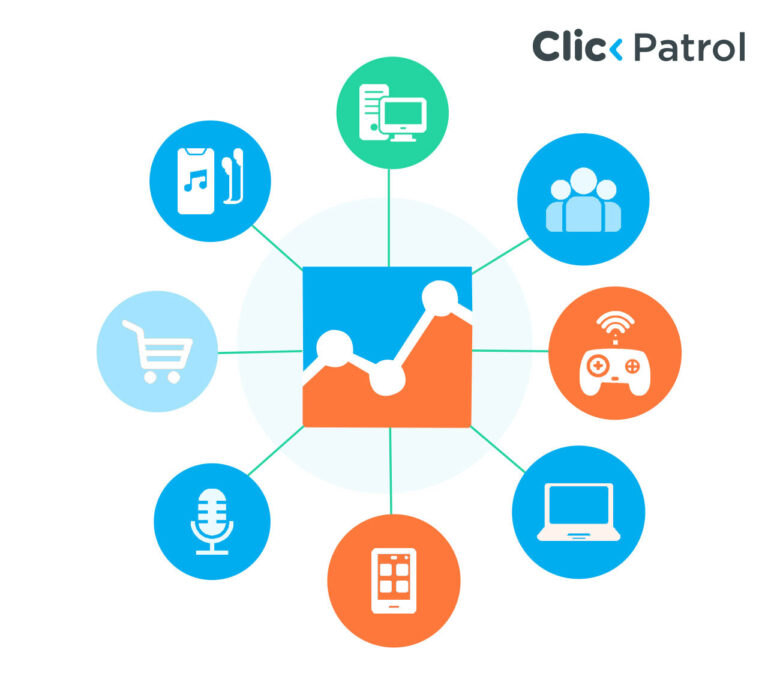
How to Conduct Competitor Keyword Gap Analysis for PPC Success
Abisola Tanzako | Dec 18, 2024

Table of Contents
- What is competitor keyword gap analysis?
- Why does PPC need keyword gap analysis?
- How to perform a PPC competitor keyword gap analysis.
- Step 1: Determine who your rivals are:
- Step 2: Select the appropriate tools:
- Step 3: Gather your PPC keyword data:
- Step 4: Extract competitor keyword data:
- Step 5: Conduct a gap analysis:
- Step 6: Analyze search intent:
- Step 7: Assess ad copy from competitors:
- Step 8: Include negative keywords:
- Step 9: Monitor and adjust:
- The best practices for PPC keyword gap analysis.
- Difficulties in analyzing competitor keyword gaps.
- How to apply keyword gap analysis results to PPC ads.
- How to prioritize keywords from the gap analysis.
- Tracking performance post-gap analysis.
- A successful PPC using gap analysis.
- FAQs.
To stay ahead of your competitors in the digital space, you need to understand their strategies and find opportunities they may have overlooked. Doing a competitor’s keyword gap analysis is one of the best ways to learn this information. Keyword gap analysis identifies places where you can beat your competition and valuable keywords that they use, but you need to.
Utilizing this technique can boost ROI, enhance marketing, and maintain your competitiveness in your field. This article will show you how to perform a competition keyword gap analysis for PPC and apply the results to your campaigns.
What is competitor keyword gap analysis?
Competitor keyword gap analysis is a process that compares your PPC keywords with your competitors to identify gaps. These gaps could be:
- Keywords that you are not targeting but that competitors are.
- Keywords where competitors are ranking higher than you are.
- Keywords that you are targeting but could be performing better compared to competitors.
By examining these gaps, you can find chances to:
- Add more keywords to your list.
- Adjust bids for keywords that are not performing well.
- Steer clear of very competitive or low-value keywords.
Why does PPC need keyword gap analysis?
Keyword gap analysis is crucial for PPC campaigns for the following reasons:
- Identifies missed opportunities: Find high-performing keywords competitors are using.
- Optimizes budget: Focus on high-potential keywords to avoid waste.
- Enhances competitive positioning: Address gaps where competitors outperform you.
- Reduces wasted spend: Eliminate low-value keywords.
- Improves targeting: Focus on long-tail, buyer-intent keywords for better conversions.
How to perform a PPC competitor keyword gap analysis.
Here is a straightforward guide to performing a PPC competitor keyword gap analysis:
Step 1: Determine who your rivals are:
- Start by determining your direct PPC advertising competitors. These companies bid on comparable keywords and aim for the same audience.
- Use resources such as Google Ads auction insights to identify competitors participating in the same keyword auctions.
Step 2: Select the appropriate tools:
Keyword gap analysis requires tools to compare competitor strategies with your campaigns. Key tools include:
- SEMrush: Provides performance analytics, traffic insights, and keyword overlap.
- SpyFu: Offers PPC keyword data and competitor ad spending.
- Ahrefs: Great for finding gaps and comparing keywords.
- Google Ads Keyword Planner: Useful for basic keyword research and competition analysis.
Step 3: Gather your PPC keyword data:
The keywords you want to target in your campaigns can be exported. Usually, Google Ads, Bing Ads, or other platforms you employ can provide this data. Add details such as:
- Keywords.
- Impressions.
- Clicks.
- Cost-per-click (CPC).
- Conversion data.
Step 4: Extract competitor keyword data:
Extract the keyword data that your competitors are bidding on using the tools of your choice. Keep an eye out for specifics like:
- The keywords for which they rank.
- CPC estimates for these keywords.
- Ad copy associated with those keywords.
- Volume and competition level.
Step 5: Conduct a gap analysis:
Compare your data with those of your competitors to find any gaps:
- Unique keywords: Keywords your competitors are targeting, but you are not. These represent opportunities to expand your reach.
- Overlapping keywords: Keywords you are both targeting, where you may be underperforming.
- Irrelevant keywords: Keywords you are targeting but your competitors are ignoring. Reassess these for value.
Step 6: Analyze search intent:
Keywords are not all made equal. Prioritize transactional and high-intent informational keywords to drive conversions. In your gap analysis, consider the purpose of the keywords:
- Transactional keywords: Indicate readiness to purchase.
- Informational keywords: Used for research purposes.
- Navigational keywords: Target specific brands or products.
Step 7: Assess ad copy from competitors:
Ad copy impacts keyword performance. Analyze competitors’ headlines and descriptions for ideas to enhance your ads.
Step 8: Include negative keywords:
Identify keywords competitors avoid. If you target them, consider adding them to your negative list to improve relevance and cut waste.
Step 9: Monitor and adjust:
Analyzing keyword gaps is a continuous process. Monitor your competitors and modify your plan of action when market dynamics change.
The best practices for PPC keyword gap analysis.
Here are best practices for refining your strategy and boosting ROI.
- Pay attention to high-intent keywords: Focus on high-intent keywords, especially long-tail ones, for better conversions and less competition.
- Pay attention to long-tail keywords: Long-tail keywords frequently result in cheaper CPCs and higher conversion rates, even when broad keywords increase traffic.
- Use automation: Tools like SEMrush and SpyFu can automate much of the analytical process, improving accuracy and saving time.
- Work with SEO groups: Collaborate with your SEO team to align strategies and gain valuable insights from overlapping keywords.
- Keep an eye on trends: Market trends can change competitor strategies. Regularly revisit your gap analysis to stay updated and maintain a competitive edge.
Difficulties in analyzing competitor keyword gaps.
The difficulties in analyzing competitor keyword gaps include the following:
- Incomplete data: Estimates from specific tools might not be entirely correct. Use a variety of tools to cross-check the accuracy of the data.
- Keywords that are too competitive: Certain high-value keywords can be too costly or competitive for your spending plan. In these situations, concentrate on long-tail or speciality keywords.
- Dynamic competition: Since competitor tactics might change quickly, keeping a close eye on their actions is critical.
An excessive focus on competitors: Understanding your competitors is essential, but keep sight of your target market and distinctive value offers.
How to apply keyword gap analysis results to PPC ads.
Here is how to make the most of your findings:
- You can make your list of keywords longer by Including high-value keywords from your rivals that fit your spending plan and objectives.
- Modify the bids strategically: Spend less on low-value keywords and reallocate your cash to high-performing ones.
- Optimize ad copy: Incorporate insights from your competitors’ ad copy to create captivating advertisements that connect with your audience.
- Improve your targeting: Focus on keywords that match specific customer groups or demographics to improve audience targeting.
- Improve landing pages: Boost conversions by understanding high-performing keywords and optimizing your landing pages to align with user expectations.
How to prioritize keywords from the gap analysis.
Here are steps to prioritize keywords:
- Analyse keywords intent: Pay attention to high-intent terms that closely match your conversion objectives, including transactional keywords that signify a willingness to buy.
- Evaluate the level of competition: Use keyword tools to see how competitive each keyword is. Consider the costs and potential ROI, as high competition can lead to higher CPCs.
- Consider keyword volume: Find keywords with high search volume and low competition for better visibility and lower bidding costs.
- Examine the relevance of your offering: Prioritise just keywords directly associated with your goods or services to prevent squandering money on pointless visitors.
- Test and adjust: Start with small bids on new keywords, then increase bids for those with high click-through and conversion rates.
Tracking performance post-gap analysis.
Tracking performance after adding new keywords and making adjustments is crucial. This ensures your changes are working and shows areas that need improvement.
1. Important metrics to monitor.
- Impressions and clicks: Track these indicators to ensure your advertisements successfully engage users and reach a larger audience.
- Click-through rate (CTR): A higher CTR suggests that your target audience responds favorably to your adverts and keywords.
- Quality score: Since Quality Scores affect your ad rank and CPC, look for fresh keywords.
- Conversion rate: Calculate how your new keywords encourage worthwhile activities like purchases or sign-ups.
- Track your cost-per-click (CPC) to keep expenses and outcomes in check.
- Return on ad spend (ROAS): To gauge campaign profitability, compare the amount of money made to the amount spent on advertising.
2. Continuous optimization.
- Modify bids: Raise bids for keywords performing well and lower or pause bids for those not.
- Refine negative keywords: As you collect data, update your negative keyword list to avoid unwanted traffic.
- Update ad copy: Tailor ad copy to reflect any new keyword additions or shifts in strategy.
A successful PPC using gap analysis.
Regular competitor keyword gap analysis is crucial in keeping your PPC ads effective and competitive in a fast-changing market. It allows you to adjust your ad budget, target more relevant keywords, and improve your ad performance. Focusing on high-intent keywords that show strong buying signals helps you attract the right audience.
Using tools like SEMrush or SpyFu to track market changes and update your strategy regularly can give you an edge. When you use automation to spot new trends, fine-tune your keyword approach, and improve your ads, you will increase your chances of a higher return on investment.
FAQs.
Q. 1 How often should I run a keyword gap analysis?
Conduct keyword gap analysis regularly, preferably at the start of a new campaign or every quarter. Regular analysis guarantees that you remain abreast of competitors’ tactics and adjust to market shifts.
Q. 2 Where do negative keywords come into play in keyword gap analysis?
Refining your targeting requires negative keywords. To increase ad relevance and reduce wasted spending, find irrelevant terms that your competitors avoid throughout the analysis and add them as negative keywords.





